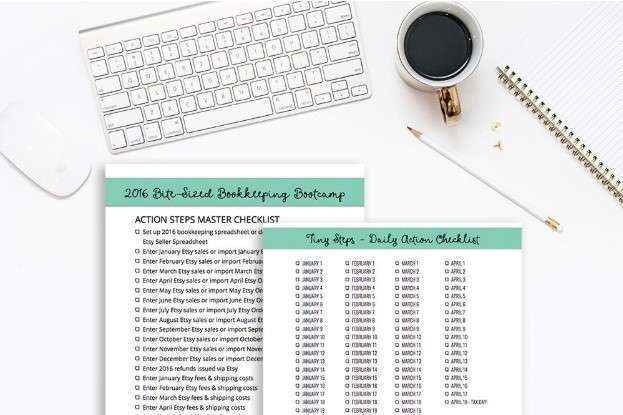
If total revenue minus total operating expenses is a negative number, this is considered an operating loss. Revenue realized through primary activities is often referred to as operating revenue. While the definition of an income statement may remind you of a balance sheet, the two documents are designed for different uses.
How to read an income statement
This takes into account all your expenses—COGS, general expenses, interest payments, and income tax. In their eyes, money you save with the help of an accountant—by reducing your tax burden, or helping you pay lower interest on debt—is separate from money you save by operating your business day-to-day. Any money saved in that way will impact your income tax and interest payments—neither of which are included when calculating operating income. Once you take your total revenue and subtract your COGS, you get your gross profit. It’s the amount you take home before taking into account other, indirect expenses. A lot of business owners focus their attention on the bottom line—their net profit.
Interest Expense

This income statement shows that the company brought in a total of $4.358 billion through sales, and it cost approximately $2.738 billion to achieve those sales, for a gross profit of $1.619 billion. These “buckets” may be further divided into individual line items, depending on a company’s policy and the granularity of its income statement. For example, revenue is often split out by product line or company division, while expenses may be broken down into procurement costs, wages, rent, and interest paid on debt.
General Expenses (aka Selling, General, and Administrative Expenses, or SG&A)

Operating Expenses are the general administrative expenses that occurred during the period to support the entity’s operating activities. Those expenses include the salary of administrative staff, including sales, admin, account, financial audit, and other staff, which is not directly https://www.bookstime.com/blog/mental-health-billing related to productions. Other expenses included in this line include electricity, repair and maintenance, utilities, gasoline, the bank charged, and other operating expenses. The important financial transactions occurring every day are reported and presented in the income statement.
AccountingTools
The income statement is an integral part of the company performance reports. While the balance sheet provides a snapshot of a company’s financials as of a particular date, the income statement reports income through a specific accounts found on an income statement period, usually a quarter or a year. The above example is one of the simplest types of income statements, where you apply the values of income, expense, gains and loss into the equation to arrive at the net income.

Key Ratios and Indicators
When deciding how you’d like to report your net income, it’s important to consider the pros and cons of both single-step and multi-step income statements. The four key elements in an income statement are revenue, expenses, gains, and losses. Together, these provide the company’s net income for the accounting period. It can also help improve financial analysis, allowing you to plan for the future and scale your business successfully. Informed use of income statements leads to new projects, streamlined practices, and a healthy financial landscape to continue accelerating long-term. To finalize your statement, add a header to the report identifying it as an income statement.

A multi-step income statement categorizes a company’s expenses into different groups based on their nature. Public companies operating in the United States are required by law to use a multi-step income statement since it provides the most accurate analysis of the business. EBT is a financial metric in a multi-step income statement that indicates a company’s performance. It is arrived at by subtracting all the income expenses before any taxes are levied. Aside from EBT, there’s also EBITDA, EBIT and a slew of other abbreviations you might want to familiarize yourself with to be even more confident when reading an income statement.
- By carefully examining both total revenue and net sales, readers can gain valuable insights into a company’s financial health.
- Avoiding common accounting errors is the best way to ensure the accuracy of your income statement.
- Income statements are also carefully reviewed when a business wants to cut spending or determine strategies for growth.
- In a similar fashion, a multi-step income statement will delineate net income into categories such as income from investment and sales revenue.
- The business also gained $1,500 from the sale of an old van and incurred a $2,000 loss from a pending lawsuit.
- By understanding how to read an income statement, you’ll be equipped with the knowledge to make informed decisions about investments and business operations.
- Below is a 10-step guide on how to write a professional income statement.
- You can quickly generate the trial balance through your cloud-based accounting software.
- Income statement reports show financial performance based on revenues, expenses, and net income.
- The first step in preparing an income statement is to choose the reporting period your report will cover.
For example, if the entity is selling clothes, this line will show the total amount of clothes that the entity sells in monetary during the months, quarters, or annually. Standard requires revenues that an entity earns during the period shown on the face of the income statement. Total revenues here are both revenues from cash sales and revenues from credit sales. All of the operating income and expenses that occur during the period are recorded in the profit and loss statement. This profit will be forwarded to the Others comprehensive statement, which reported and presented non-operating income and expenses during the period. However, the income statement is different from the balance sheet and other statements like cash flow and equity changes since it shows only financial transactions.

Non-Operating Revenue
- These statements summarize the financial transactions, including revenues, expenses, and net income, allowing you to assess a company’s profitability and overall financial health.
- Income statements can also show great detail including items like the cost of goods sold, a breakdown of operating expenses, and a delineation of revenue (income) sources.
- The income statement, along with balance sheet and cash flow statement, helps you understand the financial health of your business.
- Please review the Program Policies page for more details on refunds and deferrals.
- It’s frequently used in absolute comparisons, but can be used as percentages, too.
- Because of this, it is critical for users to have a sound understanding of the story every income statement is trying to tell.
- This income statement shows that the company brought in a total of $4.358 billion through sales, and it cost approximately $2.738 billion to achieve those sales, for a gross profit of $1.619 billion.